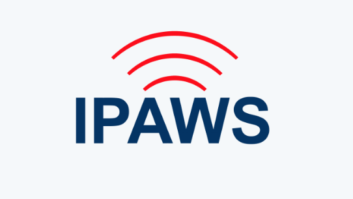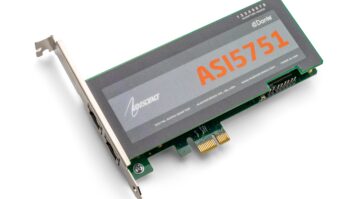(click thumbnail)AudioControl Industrial has been making one-third-octave real-time analyzers since the late 1970s.
Real-time analyzers are limited, however, in that they show only the total soundfield and do not provide any time or phase information about the signals.
The results depend considerably on the acoustics of the space in which the measurements are taken, and do not necessarily allow the direct sound from the loudspeakers to be optimized or the effects of reflections to be considered separately.
Theoretical understanding
In real life, optimizing a sound system may require knowledge of the interactions between a loudspeaker and the room it operates in.
With experience, the human ear can become a fine instrument for adjusting sound. But sometimes ears fail to reveal the cause of audible problems clearly enough to tweak a solution.
Thumbs Up:

- Extensive menu of useful audio measurement tools
- ‘Dead simple’ to use
- Automated collection of all data
Thumbs Down:
- External power conversion needed for 230 V operation
- Parallel one-third octave real-time display not possible
For information from AudioControl Industrial, contact the company in Washington state at (425) -775-8461, fax (425) 778-3166, e-mail [email protected] or visit www.audiocontrolindustrial.com.
During the 1970s, Dick Heyser put forth the theory of time delay spectrometry. This allows engineers to analyze not only the steady-state results of loudspeaker/room interaction, but also to see the time history of this interaction.
By this means, it is possible to separate out the direct sound from the individual reflections or measure the overall final long-term result.
TEF was a revelation to dedicated users, providing a great deal of insight into sound-system operation.
However, the original TEF test instrument implementing these ideas was difficult and slow to operate, providing a lot of detail that could be difficult to interpret.
Since then, instruments have been developed that are more refined and easier to use, ultimately leading to PC-based measurement systems.
Dead simple
Even these require considerable theoretical understanding. What the majority of users would really like is a test instrument that is dead simple to use, while still providing insight into the things that affect sound, rather than things that have historically been easy to measure.
This is what the AudioControl Industrial Iasys – pronounced “I assist,” without the “T” – sets out to achieve: insightful measurement leading to sound system improvements that do not require a degree in signal processing to comprehend.
The question is, does Iasys succeed at this?
The first use of Iasys is to aid with adjustment of crossover frequencies and relative levels between devices. The process involves mounting the loudspeaker system into its installation position in the building, then starting the “crossover” test.
As with all procedures employing Iasys, the instrument follows an automatic process of data collection with the operator bound by a few simple rules.
Iasys analysis begins with the measurement of background noise and the setting of test levels in order to achieve a minimum 18 dB signal-to-noise ratio, ensuring accuracy of other measured results.
The next step is measurement of the useful bandwidth of each device, along with its “energy center” – a frequency near the middle of the passband. The user is prompted to store each result.
Once Iasys has measured more than one device in a multiway system, it offers a recommended crossover frequency and instructs the user to start a further test to adjust the levels.
It is possible to intervene here and manually alter the recommended crossover frequency before proceeding.
System test
In this review, a home audio system consisting of JBL Control 5 Plus full-range monitors and a JBL Control SB-5 subwoofer was evaluated, receiving a recommended crossover of 236 Hz, almost exactly matching the JBL crossover setting.
For the next stage, Iasys indicates the various passbands and their relative amplitudes, allowing adjustment of crossover band levels.
Crossover setup makes no recommendations about filter shape or slope rate, only frequency and amplitude. The user can, however, select alternative filters and note the overall results each introduces.
The next suggested step is delay/polarity adjustment to aid in ensuring that loudspeaker system elements are mounted and delayed correctly prior to equalization.
Iasys initially measures the rough delay between the loudspeaker and microphone using a short pulse, and then fine-tunes this with proprietary measurements of the noise signal.
If the delay measurement follows previous measurements of the same device, then, within about one minute, delay time, estimated distance and absolute polarity at the “energy center” frequency of the device are indicated.
The instrument then suggests a “coherence” test, used to indicate acoustic cancellations in the loudspeaker system and its interaction with the room.
The coherence test repeats continuously, taking approximately 30 seconds per sweep. This allows adjustments to be made to levels, delays and/or physical device relationships to optimize the overall result.
Unlike Goldline TEF, DRA Labs MLSSA or JBL Smaart acoustical measurement systems, however, it is impossible to distinguish between effects caused by device alignment and those caused by reflections, as there is no visible time response.
The familiar method of waving an acoustic absorber near the microphone can be used to see what changes occur when some possible reflection paths are blocked.
So, in short, coherence can be of help in tuning sound systems, but users interpreting impulse response-based measurements will probably continue to find those measurements more useful.
The next step is usually the Iasys “equalizable spectra” test, which combines the results of the frequency response and coherence measurements to indicate approximate recommended band amplitude adjustments and to show frequencies that can and cannot be safely improved with an equalizer.
For example, if a signal null is likely to have been caused by interference effects between devices or between a device and an acoustic reflection, then trying to equalize this will have little effect other than stressing the loudspeaker and amplifier.
Iasys attempts to single these effects out and warns to leave them alone.
Limiter test
Another useful test is called simply “limiter.”
Limiters are often placed just before the power amplifier to protect the loudspeaker drivers and/or amplifiers from overdrive conditions, often with haphazard settings.
Iasys tries to overcome this by detecting power compression by tracking the relationship between the output drive level and the change in measured sound pressure, simultaneously monitoring the amplifier output to detect possible clipping conditions.
A limiter can then be inserted and the test repeated to confirm a suitable setting. Having by now built-up confidence in Iasys, the home audio system was used to confirm the successful safe operation of this function.
Finally, Iasys provides a useful indication of RT60 reverberation time and the overall sound pressure level, but not a conventional parallel one-third-octave real-time display.
For those who work in both 115 V and 230 V environments, two Iasys units (or a power transform) will be needed, because external voltage selection is not provided.
Iasys is designed to simplify the setup and equalization of loudspeaker systems. It recommended the same settings for a simple three-way home music system as those provided the manufacturer.
For installers who find the use of TEF, MLSSA or Smaart a bit daunting, Iasys can help optimize sound system settings. It also has the advantage of coming as a rugged self-contained instrument including measurement microphone and soft carrying case.












